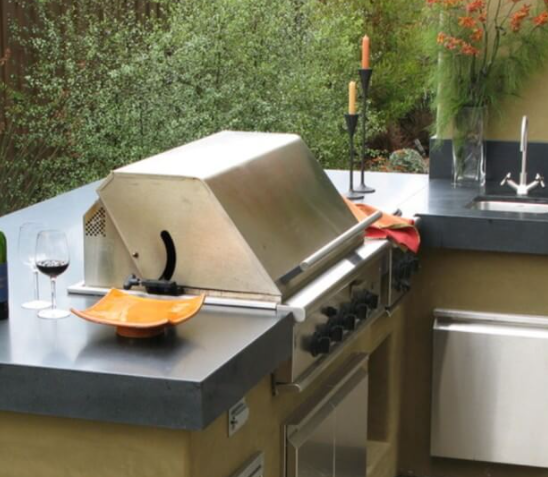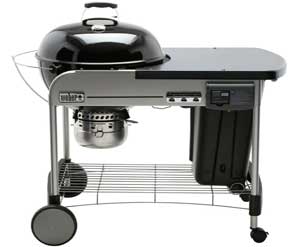 Popular Outdoor Surfaces of Countertops
Popular Outdoor Surfaces of CountertopsFor outdoor kitchen countertops, granite is considered the best option. Granite is both durable and stunning, and is a natural stone. It comes with a number of colors as well as patterns. Granite is not affected by sun, and it is resistant to stains, mildew, and mold if properly sealed, all of which can be a major problem outdoors.
For outdoor kitchens, concrete is a great choice, since it can withstand the elements. You may need to use a sealant on concrete countertops to avoid staining. For concrete countertops, proper installation is very necessary, since concrete will crack if not done correctly. Concrete is much easier than granite to scratch and crack, but it appears to hold up very well.
Other natural stones can be good countertop choices for outdoor kitchens. For instance, soapstone is dense and resistant to heat. It is also stain-resistant and, in the sun or rain, it is not likely to fade. To boost the natural darkening process of the stone, you will need to treat soapstone with special mineral oil from time to time. Soapstone can be scratched quite quickly, but without a lot of hassle, it can be sanded out.
Quartzite is very similar to granite and is also robust and strong. As well as extended exposure to the sun, it can keep up with the weather conditions.
If you aren't too worried with etching and staining, marble can be used in outdoor environments. Just as inside, acidic foods and beverages can cause etching, and if it is not properly sealed, liquids can be absorbed into the stone. A honed finish will help stop too much improvement in the appearance of your marble countertops, but as you are probably used to seeing with marble countertops, they will not be polished.
In outdoor kitchens, you can stop using quartz, since it quickly fades with exposure to sunlight. Formica should never be used outdoors because, with moisture and humidity exposure, it can warp and deteriorate. Outside, timber and stainless-steel countertops are also troublesome. In the sunlight, stainless steel can become incredibly hot and the polished surface will be blinding. Wood is beautiful, but to prevent warping and other damage, it will require a lot of upkeep.
Caring for Countertops Outdoor
Luckily, you can take care of your outdoor countertops just as the ones inside your home do. Since most outdoor countertops are stone, to keep your countertops clean, shiny, and secure, you can rely on Rock Doctor's Granite line.
Using the cleaner on your stone countertop surfaces for regular cleaning. Your countertops are going to go from grimy to spotless in just a few minutes. To keep them looking shiny and clean, polish your countertops every couple of weeks. Indoor countertops need to be sealed only once every 12 to 18 months, but to keep the stone safe from the elements, you can find that your outdoor stone countertops need to be sealed every six to eight months.






